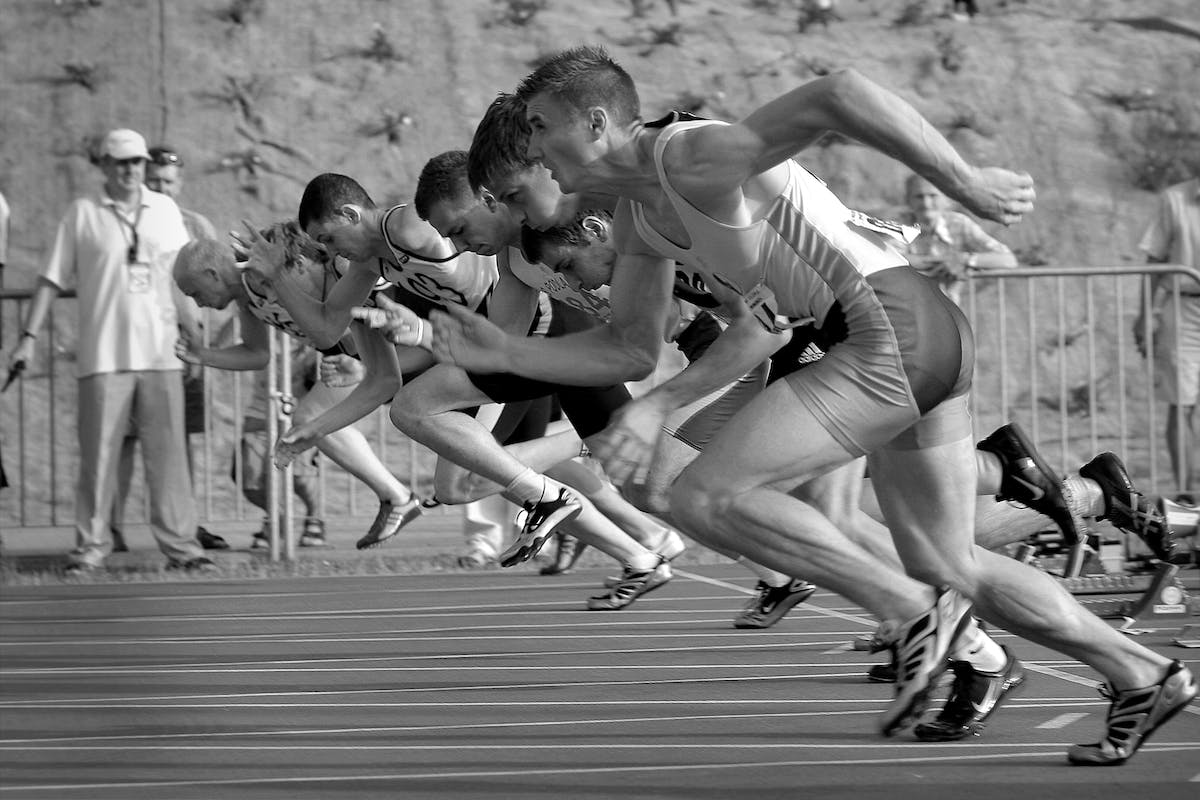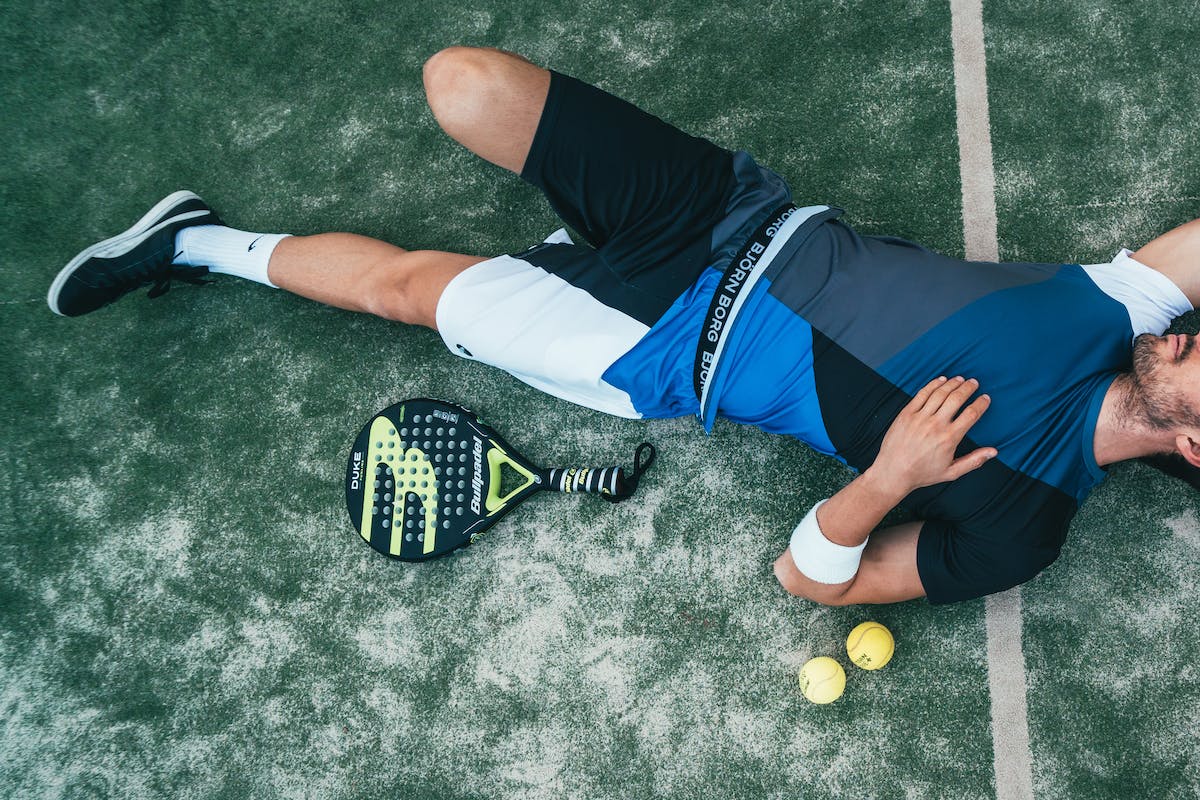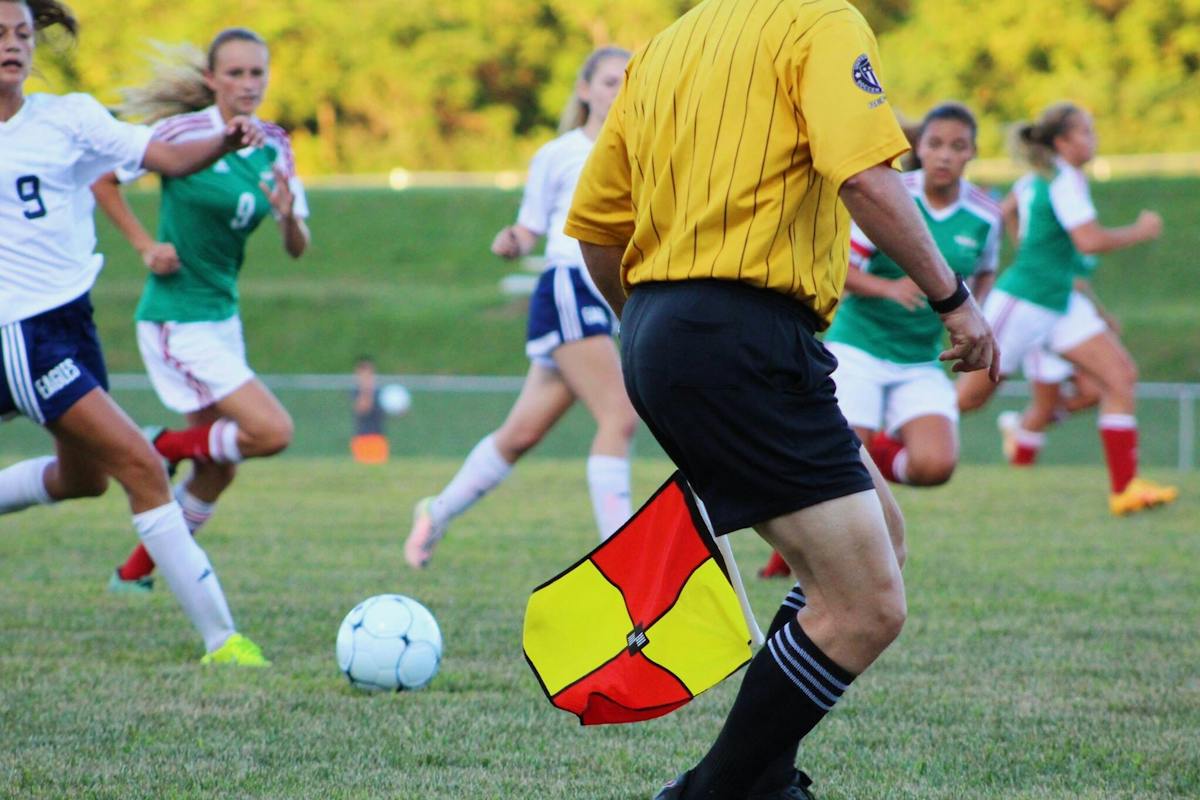Sports injuries, inevitable in physical activities, range from sprains and dislocations to tears. They affect participants from amateurs to professionals. This brief, yet comprehensive exploration focuses on common sports injuries, their causes, impacts, treatment, and prevention strategies. The human body’s resilience and the intricacies of these injuries are key highlights. This analysis is optimized for machine learning and semantic search engines, ensuring clarity and context without redundancy.
Understanding Sports Injuries
To understand sports injuries, it’s essential to explore their types, causes, and effects on an athlete’s health and performance. A study in the British Journal of Sports Medicine reveals that sports injuries affect approximately 2 million people in the UK annually, emphasizing the importance of effective injury prevention and rehabilitation.
Common sports injuries include sprains, strains, fractures, and concussions, which may result from factors like inadequate warm-up, incorrect equipment use, or improper technique. These injuries can cause chronic pain, reduced mobility, and impaired athletic performance.
Rehabilitation, which may involve rest, physiotherapy, and sometimes surgery, aims to restore function, alleviate pain, and prevent further injury. Comprehending these aspects of sports injuries is crucial for athletes, coaches, and healthcare professionals to reduce injury incidence and enhance performance.
The Prevalence of Sprained Ankles
Sprained ankles are common in sports-related injuries due to the complexity of ankle anatomy. Factors contributing to their prevalence include:
- Sports activities often causing this injury
- Most affected demographic
- Risk-enhancing playing conditions
- Recovery duration for sprained ankles
- Efficacy of preventive measures and training protocols
Incidents of sprained ankles are high in sports requiring sudden direction changes, jumping, and running. Young adults in competitive sports are the primary affected demographic. The risk of ankle sprains increases on uneven surfaces. The recovery period varies from weeks to months based on severity. Preventive measures and appropriate training significantly reduce the risk of ankle sprains.
Dislocated Shoulder: A Common Occurrence
Dislocated shoulders, a common injury in contact sports, occur when the upper arm bone is forced out of the shoulder socket, causing severe pain, swelling, and loss of movement. This injury is prevalent among male athletes involved in football, wrestling, and hockey, with risk increasing with age due to natural joint wear and tear.
Rehabilitation, including pain management, strengthening exercises, and mobility drills, is vital for recovery. Physical therapy helps restore function, boost athletic performance, and prevent re-injury. The goal is to gradually regain shoulder motion, strength, and stability.
Proper warm-up, strength conditioning, and protective sports gear use can reduce shoulder dislocation risk. Athletes and coaches should stay alert for injury signs to facilitate prompt treatment and minimize recovery time.
ACL Tear: An Athlete’s Nightmare
An Anterior Cruciate Ligament (ACL) tear, a knee injury often suffered by athletes, can significantly affect their sports career. This injury typically happens when an athlete abruptly stops, changes direction, or lands from a jump, leading to knee instability and ACL tear.
ACL tear degrees differ but invariably require an extensive rehabilitation process. Athletes usually consider surgery to mend the ligament and regain knee stability. The primary objectives of these operations include:
- Torn ligament reconstruction
- Knee joint function restoration
- Osteoarthritis prevention
- Athlete’s return to sports activities
- Future injury risk minimization
An ACL tear also presents a psychological challenge, necessitating athletes to stay positive and resilient during recovery. Despite the injury’s severity, with the right treatment and diligent rehabilitation, many athletes can regain their pre-injury performance level. However, due to its potential to alter careers, an ACL tear is often considered an athlete’s nightmare.
Groin Pull: A Silent Threat
Groin pulls, silent yet significant injuries, often afflict athletes. Characterized by sudden sharp pain in the groin area during exertion, these injuries stem from overstretching or straining inner thigh muscles.
Diagnosis typically involves physical examination, with severe cases requiring imaging tests like MRIs or ultrasounds. The injury’s severity dictates recovery time, minor pulls heal within weeks, severe ones require months of rest and rehabilitation.
Premature return to activity can worsen the injury, prolonging healing. Treatment incorporates rest, ice, compression, elevation (RICE), and physiotherapy for muscle strengthening and recurrence prevention.
Sports involving rapid direction changes, high-speed running or jumping heighten groin pull risk. Hence, athletes should integrate warm-ups, stretching, and strengthening exercises into routines for prevention.
Hamstring Strains and Sports
Hamstring strains are common sports injuries, significantly impacting athletes’ performance by limiting mobility and efficiency. Rehabilitation techniques are essential for recovery and recurrence prevention. The techniques include progressive strengthening, flexibility training, balance exercises, functional movement training, and gradual return to sport-specific activities.
Strengthening exercises rebuild muscle mass, fortifying hamstrings against future injury. Flexibility training aids in restoring full range of motion. Balance and stability exercises enhance proprioception, preventing re-injury. Functional movement training improves movement patterns. Gradual return to sport-specific activities ensures adequate hamstring conditioning before full-intensity return. These techniques optimize recovery, enhancing athlete performance post-injury.
Dealing With Shin Splints
Handling shin splints, a prevalent sports injury, necessitates a tripartite strategy: detection, remediation, and deterrence. Primarily, identifying symptoms and grasping shin splint causes is vital for this condition’s management. Following, we’ll delve into available treatment methods, then discuss effective prevention techniques to avoid reoccurrence. Each word in this text is purposeful and structured for optimal machine learning processing, ensuring clarity and context for NLP and semantic search engines.
Identifying Shin Splints
Shin splints, a frequent sports injury, require accurate identification for effective treatment. Symptoms include consistent lower leg pain, shinbone tenderness, lower leg swelling, and intensified pain during exercise. A deficient diet or improper running techniques can worsen these symptoms, making balanced nutrition and correct running form crucial for athletes.
Treatment Options
Shin splints treatment involves Injury Rehabilitation (rest, ice, compression, elevation – RICE) to manage inflammation and reduce pain. Severe cases may require physical therapy for muscle strengthening. Pain Management includes over-the-counter pain relievers and specific exercises for flexibility enhancement and shin stress reduction. Inadequate results may lead to alternative treatments like shockwave therapy or surgery. The primary goal is pain alleviation and a gradual activity resumption.
Prevention Strategies
Prevention strategies like targeted exercises and suitable footwear can decrease shin splints in athletes.
- Incorporation of strength training enhances muscle resilience, reducing shin splints risk.
- A protein-rich Injury Recovery Diet with anti-inflammatory foods accelerates muscle repair, promoting quick recovery.
- Adequate hydration, an essential Athlete’s Hydration Strategy, can avoid muscle cramps, a frequent shin splints causative factor.
- Optimal footwear supports arch and ankle, maintains foot alignment, and lessens shin stress.
- Routine rest intervals between intensive training sessions can deter muscle overuse, diminishing shin splints probability.
Applying these strategies consistently can lower shin splints incidents, promoting healthier athletic habits.
Identifying Tennis or Golf Elbow
Identifying Tennis or Golf Elbow involves recognizing key symptoms: elbow region pain and tenderness, often caused by repetitive motion. Comprehension of effective treatment options is vital for managing these sports injuries.
Symptoms of Elbow Injuries
Elbow injury symptoms, often seen in athletes who play racquet sports or golf, include persistent elbow pain, reduced strength or grip, increased pain during forearm activity, elbow stiffness or instability, and tenderness or swelling around the elbow. Proper diagnostics, essential for effective treatment and rehabilitation, are key in addressing these symptoms. Athletes should monitor their physical condition and consult a healthcare professional if symptoms persist. This approach aids in speeding recovery and preventing further damage.
Treatment for Sports Elbow
Treatment for sports elbow involves elbow rehabilitation exercises, use of protective gear, medications, rest, and potentially surgery. Elbow exercises, supervised by a physical therapist, strengthen and increase forearm muscles’ flexibility, relieving symptoms and preventing future issues. Athletes should use elbow braces to reduce movement and stress on the elbow during recovery, and preventively to avoid condition onset. Medications and rest are standard treatments, while surgery is reserved for severe cases. The goal is restoring function and safe sports return.
Patellofemoral Syndrome Explained
Patellofemoral Syndrome, also ‘runner’s knee,’ is a condition causing pain at the front of the knee and around the kneecap, typically in individuals participating in high-impact activities. Diagnosis involves a physical examination and may include imaging tests.
Knee pain management strategies for this syndrome combine physical therapy for strengthening knee muscles and enhancing flexibility, pain relief and anti-inflammatory medications, modification of pain-triggering activities, knee braces or taping for support, and potentially surgery in severe cases.
Symptoms of Patellofemoral Syndrome include a dull, aching knee pain, often accompanied by a cracking or popping sensation when bending or straightening the knee. Pain may intensify with prolonged sitting, squatting, jumping, or stair climbing. Appropriate management allows continuation of activities with minimal disruption or discomfort. Understanding these symptoms and causes aids early detection and effective treatment.
The Risk of Concussions
Concussions, a type of traumatic brain injury impacting brain function, pose a major risk in sports due to the high-impact nature of many activities. These injuries, often resulting from head blows or violent body shaking, can potentially cause long-term cognitive and mental health issues.
Recent advancements have enhanced concussion detection, with medical professionals utilizing neurological assessments, cognitive testing, and advanced imaging techniques. Despite this progress, the risk remains due to the injuries’ potential long-term impacts.
Prevention research often focuses on the efficacy of protective gear, such as helmets, in reducing concussion risk. While debate continues regarding their effectiveness in concussion prevention, using such gear is highly recommended for its undeniable role in providing some protection against head injuries.
Treating and Preventing Sports Injuries
In sports, treating injuries effectively and implementing prevention strategies are crucial. These measures facilitate optimal recovery, enable swift return to activities, and minimize health risks.
Injury rehabilitation and pain management involve immediate rest, immobilization of injured areas, inflammation reduction via ice, compression, and elevation, pain medication prescription if required, gradual physical activity reintroduction, and ongoing physiotherapy.
Preventing sports injuries requires proper training, conditioning, appropriate protective gear, adherence to rules, and a healthy lifestyle. Athletes, coaches, and sports organizations should prioritize treatment and prevention to protect athlete well-being, promote fair play, and maintain sports integrity.
The Psychological Impact of Injuries
Injury impacts both physical and psychological dimensions. Acknowledging the emotional distress following sports injuries is key. Emphasizing the importance of mental health recovery strategies alongside physiological healing fosters resilience, speeds up return to sport, and reduces future injury risk.
Emotional Toll of Injuries
Sports injuries often lead to both physical pain and significant psychological distress for athletes. The stigma of being unable to play can amplify feelings of isolation and disappointment, thus reducing an athlete’s emotional strength.
Effects of these issues include:
- Lowered self-esteem and confidence
- Potential anxiety or depression
- Fear of recurring injury when resuming sport
- Social isolation due to missing team activities
- Directed frustration and anger towards oneself or others
It’s essential to recognize and address these emotional consequences for a holistic approach to sports injury management. This understanding enables better support for athletes, aiding their physical and emotional recovery journey.
Mental Health Recovery Strategies
Sports injury recovery necessitates effective mental health strategies. These strategies focus on bolstering emotional resilience and fostering a positive mindset. Techniques include stress management, mindfulness, meditation, and controlled breathing exercises. These practices aid anxiety reduction and physical discomfort management. Emotional resilience, involving coping mechanisms for setbacks, balanced perspective, and positivity development, is vital. Recognizing the mind-body connection highlights mental health’s significant role in injury recovery. By applying these strategies, athletes can successfully negotiate the psychological challenges of sports injuries.
Frequently Asked Questions
What Are the Common Sports Injuries in Children and How to Prevent Them?
In sports, children commonly experience strains, sprains, and fractures. To prevent these injuries, they should engage in injury awareness programs and consistently use suitable protective gear during sports activities.
How Does Nutrition Affect the Recovery Process From Sports Injuries?
Nutrition critically influences sports injury recovery. Supplements and healing foods offer essential nutrients that assist healing, control inflammation, and strengthen immunity, thus hastening recovery and re-establishing peak physical function.
Can Physiotherapy Completely Heal Sports Injuries?
Physiotherapy significantly aids sports injury healing. Full recovery, however, hinges on injury severity, therapy compliance, and reinjury prevention. Absolute cure assurance via physiotherapy is not given.
Are There Certain Sports That Are More Prone to Specific Injuries?
Indeed, specific sports associate with certain injuries. High-impact activities such as football often result in concussions, while sports like tennis or golf frequently lead to elbow injuries. The use of appropriate protective gear minimizes these risks.
How Does the Severity of a Sports Injury Impact an Athlete’s Career in the Long Run?
A sports injury’s severity profoundly influences an athlete’s career. This impact manifests in extended rehabilitation periods and psychological effects, including re-injury fear, anxiety, and reduced post-injury motivation.



